Co Le Pagoda’s history, deeply intertwined with the legend of Nguyen Minh Khong, makes it a must-see Vietnamese cultural site, and SIXT.VN can help you explore its beauty. Planning a trip to Vietnam offers you to experience the beautiful destination with excellent temple architecture and more profound historical stories. Let SIXT.VN assist you in arranging your trip, from lodging to transportation, ensuring a smooth and memorable cultural and religious journey.
1. Who Was Nguyen Minh Khong and What Is His Significance in Vietnamese History?
Nguyen Minh Khong, a celebrated figure in Vietnamese history, was a prominent monk, physician, and magician during the Ly Dynasty (11th-12th centuries). According to historical accounts and legends, he was revered for his exceptional healing abilities and profound spiritual influence, playing a crucial role in both the religious and socio-political landscape of Vietnam.
- Healing Abilities: Nguyen Minh Khong was renowned for his miraculous ability to cure illnesses, even those considered incurable by conventional medicine. Legend has it that he cured King Ly Than Tong of a severe ailment, which solidified his reputation and influence within the royal court and among the general populace.
- Spiritual Influence: As a devout Buddhist monk, Nguyen Minh Khong was deeply respected for his spiritual wisdom and dedication to the Dharma. He founded several temples and pagodas, promoting Buddhism as a way of life and guiding countless individuals on their spiritual paths.
- Magical Prowess: Nguyen Minh Khong was also known for his alleged magical abilities, which added to his mystique and fame. Stories abound of him performing extraordinary feats, such as controlling the weather, transforming objects, and even summoning divine beings.
- Cultural Icon: Nguyen Minh Khong’s legacy extends far beyond his religious and medical achievements. He is considered a cultural icon in Vietnam, embodying the virtues of compassion, wisdom, and spiritual enlightenment. His image and stories continue to inspire and resonate with people from all walks of life.
His impact is so significant that Co Le Pagoda is dedicated to him, honoring his contributions to Buddhism and Vietnamese culture.
2. How Is Nguyen Minh Khong Associated With Co Le Pagoda?
Nguyen Minh Khong’s association with Co Le Pagoda is central to the pagoda’s history and cultural significance. Originally built during the Ly Dynasty (11th-13th centuries), the pagoda, initially named “Than Quang Tu,” was dedicated to both Buddha and Saint Nguyen Minh Khong.
- Founding and Dedication: Historical records indicate that Nguyen Minh Khong played a key role in the founding of Than Quang Tu, later known as Co Le Pagoda. His dedication to both Buddha and the saint reflects the syncretic nature of Vietnamese Buddhism, which often incorporates elements of folk religion and ancestor worship.
- Spiritual Connection: The pagoda is believed to be a place where Nguyen Minh Khong practiced his spiritual austerities and imparted his teachings to disciples. Many legends and stories are associated with the pagoda, further solidifying its connection to the revered monk.
- Historical Artifacts: Over the centuries, Co Le Pagoda has preserved numerous artifacts and relics related to Nguyen Minh Khong, including statues, inscriptions, and ritual objects. These items serve as tangible reminders of his presence and influence on the pagoda’s history and development.
- Annual Commemoration: Every year, Co Le Pagoda hosts a grand festival to commemorate Saint Nguyen Minh Khong, attracting thousands of pilgrims and visitors from across Vietnam and beyond. The festival features Buddhist ceremonies, traditional performances, and cultural activities, all honoring the life and legacy of the revered monk.
3. What Role Did Nguyen Minh Khong Play in the Construction or Renovation of Co Le Pagoda?
While definitive historical records about Nguyen Minh Khong’s direct involvement in the initial construction are limited, oral traditions and local legends suggest a significant role. He is credited with selecting the site for its spiritual significance and contributing to the initial design and layout of the pagoda.
- Site Selection: According to local lore, Nguyen Minh Khong chose the location of Than Quang Tu (Co Le Pagoda) due to its favorable geomantic properties and its proximity to a sacred spring, believed to possess healing powers.
- Initial Design: While the original wooden structure of the pagoda has long since disappeared, it is believed that Nguyen Minh Khong influenced its initial design, incorporating elements of traditional Vietnamese architecture and Buddhist symbolism.
- Spiritual Guidance: Even if he wasn’t directly involved in the physical construction, Nguyen Minh Khong likely provided spiritual guidance and blessings to the artisans and builders, ensuring that the pagoda was built in accordance with Buddhist principles and traditions.
It is important to note that the pagoda underwent significant renovation and reconstruction in 1902 under the direction of Abbot Pham Quang Tuyen, who introduced a unique blend of Eastern and Western architectural styles.
4. What Are Some of the Legends or Stories Connecting Nguyen Minh Khong to Co Le Pagoda?
Numerous legends and stories connect Nguyen Minh Khong to Co Le Pagoda, adding to its mystique and spiritual significance.
- Healing the King: Perhaps the most famous legend associated with Nguyen Minh Khong is his miraculous healing of King Ly Than Tong, who was afflicted with a debilitating illness. According to the story, Nguyen Minh Khong used his medical knowledge and spiritual powers to cure the king, earning him immense gratitude and recognition.
- Taming the Dragon: Another popular legend tells of Nguyen Minh Khong taming a fierce dragon that terrorized the local population near Co Le Pagoda. Using his magical abilities, he subdued the dragon and transformed it into a docile creature, bringing peace and prosperity to the region.
- Building the Pagoda Overnight: Some stories claim that Nguyen Minh Khong and his disciples magically erected the original Than Quang Tu overnight, using their combined spiritual powers to manifest the pagoda from thin air.
- The Sacred Spring: A local legend tells of a sacred spring near Co Le Pagoda that is said to have been blessed by Nguyen Minh Khong. The water from the spring is believed to possess healing properties and is often used in religious ceremonies and rituals.
These legends, while not historically verifiable, contribute to the rich cultural heritage of Co Le Pagoda and underscore the profound respect and reverence that the Vietnamese people have for Nguyen Minh Khong.
5. How Does the Annual Co Le Pagoda Festival Commemorate Nguyen Minh Khong?
The annual Co Le Pagoda Festival, held from the 13th to the 16th day of the ninth lunar month, is primarily dedicated to commemorating Saint Nguyen Minh Khong. The festival serves as a vibrant celebration of his life, legacy, and spiritual contributions to Vietnamese culture.
- Buddhist Ceremonies: The festival features a series of solemn Buddhist ceremonies, including chanting, sutra recitations, and offerings to Buddha and Saint Nguyen Minh Khong. Monks and nuns lead these ceremonies, invoking blessings and paying homage to the revered monk.
- Processions and Parades: Colorful processions and parades wind their way through the pagoda grounds and surrounding villages, showcasing traditional costumes, music, and dance performances. The highlight of these processions is often the palanquin carrying the effigy of Nguyen Minh Khong, symbolizing his presence and blessings.
- Traditional Performances: The festival also includes traditional spiritual performances, such as water puppetry, folk singing, and theatrical plays, which depict stories from Nguyen Minh Khong’s life and legends. These performances entertain the crowds and educate them about the cultural significance of the saint.
- Cultural and Folk Games: Visitors can participate in cultural and folk games, such as dragon boat racing, tug-of-war, and bamboo dancing, which add to the festive atmosphere and promote community bonding.
- Recognition as National Heritage: In 2023, the Co Le Pagoda Festival was officially recognized as a National Intangible Cultural Heritage, further solidifying its importance in preserving and promoting Vietnamese cultural traditions.
During the festival, visitors can participate in traditional spiritual performances and cultural and folk games.
5.1. Experiencing the Co Le Pagoda Festival
Attending the Co Le Pagoda Festival offers a unique opportunity to immerse yourself in Vietnamese culture and experience the spiritual atmosphere of this historic site. SIXT.VN can provide transportation, accommodation, and tour services to ensure a seamless and enriching experience.
6. What Architectural Elements of Co Le Pagoda Reflect the Influence of Nguyen Minh Khong?
While the pagoda’s architecture primarily reflects the renovation efforts of Abbot Pham Quang Tuyen in the early 20th century, some elements subtly allude to Nguyen Minh Khong’s influence and the pagoda’s historical roots.
- Traditional Layout: The pagoda’s layout, following the “Tien Phat, Hau Thanh” (Buddha in the front, Saints in the back) arrangement, is a traditional Vietnamese design that predates the renovation. This layout honors both Buddha and Saint Nguyen Minh Khong, reflecting the pagoda’s dual dedication.
- Spiritual Symbolism: Certain architectural motifs and symbols, such as lotus flowers, dragons, and phoenixes, are commonly found in Vietnamese Buddhist architecture and may have been inspired by Nguyen Minh Khong’s teachings and beliefs.
- Altar to Nguyen Minh Khong: The pagoda features a dedicated altar to Nguyen Minh Khong, where visitors can pay their respects and offer prayers to the revered monk. The presence of this altar underscores the pagoda’s continued devotion to Nguyen Minh Khong and his enduring legacy.
- Preservation of Relics: The pagoda preserves numerous artifacts and relics related to Nguyen Minh Khong, which are displayed for visitors to view and appreciate. These items serve as tangible reminders of his presence and influence on the pagoda’s history.
It is important to note that the pagoda’s unique blend of Eastern and Western architectural styles is primarily attributed to Abbot Pham Quang Tuyen’s vision and the historical context of the early 20th century.
7. How Did the Beliefs and Practices of Nguyen Minh Khong Influence the Religious Practices at Co Le Pagoda?
The beliefs and practices of Nguyen Minh Khong have significantly influenced the religious practices at Co Le Pagoda, shaping its spiritual identity and attracting devotees seeking blessings and guidance.
- Syncretic Buddhism: Nguyen Minh Khong’s emphasis on syncretic Buddhism, which blends elements of Buddhism, Taoism, and folk religion, is reflected in the diverse religious practices at Co Le Pagoda. Visitors can observe rituals and ceremonies that incorporate various traditions, appealing to a wide range of spiritual beliefs.
- Healing Practices: Inspired by Nguyen Minh Khong’s renowned healing abilities, Co Le Pagoda is often visited by people seeking cures for illnesses and relief from suffering. Monks and nuns may offer blessings, prayers, and traditional remedies to those in need.
- Devotion to Saints: The pagoda’s devotion to Saint Nguyen Minh Khong, alongside Buddha, is a testament to the importance of saint worship in Vietnamese Buddhism. Devotees believe that Nguyen Minh Khong possesses supernatural powers and can intercede on their behalf, granting blessings and protection.
- Emphasis on Meditation: While not explicitly documented, it is likely that Nguyen Minh Khong’s emphasis on meditation and mindfulness has influenced the spiritual practices at Co Le Pagoda. Visitors may participate in meditation sessions or engage in personal reflection within the tranquil surroundings of the pagoda.
8. What Impact Did Nguyen Minh Khong’s Legacy Have on the Local Community Surrounding Co Le Pagoda?
Nguyen Minh Khong’s legacy has had a profound and lasting impact on the local community surrounding Co Le Pagoda, shaping its cultural identity, fostering social cohesion, and promoting economic development.
- Cultural Identity: Nguyen Minh Khong is considered a cultural hero in the region, embodying the values of compassion, wisdom, and spiritual enlightenment. His stories and legends are passed down through generations, instilling a sense of pride and belonging among the local population.
- Social Cohesion: Co Le Pagoda serves as a central gathering place for the local community, fostering social interaction and promoting solidarity. The annual Co Le Pagoda Festival brings people together from all walks of life, strengthening community bonds and celebrating their shared heritage.
- Economic Development: The pagoda attracts a steady stream of pilgrims and tourists, boosting the local economy and creating employment opportunities. Local businesses, such as restaurants, guesthouses, and souvenir shops, thrive on the influx of visitors, contributing to the overall prosperity of the community.
- Preservation of Traditions: The local community plays a vital role in preserving and promoting the cultural traditions associated with Nguyen Minh Khong and Co Le Pagoda. They actively participate in the annual festival, maintain the pagoda grounds, and pass down their knowledge and skills to younger generations.
 Co Le Pagoda.jpg
Co Le Pagoda.jpg
8.1. Supporting the Local Community with SIXT.VN
By choosing SIXT.VN for your travel needs, you not only ensure a comfortable and convenient trip but also contribute to the economic well-being of the local community surrounding Co Le Pagoda. SIXT.VN partners with local businesses and service providers, supporting sustainable tourism and promoting cultural preservation.
9. How Has Co Le Pagoda Evolved Over Time While Maintaining Its Connection to Nguyen Minh Khong?
Co Le Pagoda has undergone significant transformations over the centuries, evolving from a simple wooden structure to a sprawling complex with a unique blend of Eastern and Western architectural styles. Despite these changes, the pagoda has steadfastly maintained its connection to Nguyen Minh Khong, honoring his legacy and preserving his memory.
- Preservation of Traditions: The pagoda has consistently preserved traditional religious practices and rituals associated with Nguyen Minh Khong, ensuring that his teachings and beliefs continue to be传授ed to future generations.
- Adaptation to Modernity: While preserving its historical roots, Co Le Pagoda has also adapted to modernity, incorporating modern amenities and facilities to cater to the needs of pilgrims and tourists.
- Community Involvement: The local community has played a crucial role in maintaining the pagoda’s connection to Nguyen Minh Khong, actively participating in the annual festival and ensuring that his stories and legends are passed down through generations.
- Recognition as Heritage Site: The pagoda’s recognition as a National Architectural Heritage Site in 1988 has helped to protect and preserve its historical and cultural significance, ensuring that its connection to Nguyen Minh Khong remains intact for years to come.
10. What Can Visitors Learn About Nguyen Minh Khong When Visiting Co Le Pagoda Today?
Visitors to Co Le Pagoda today can learn a great deal about Nguyen Minh Khong, gaining insights into his life, legacy, and spiritual contributions to Vietnamese culture.
- Historical Information: The pagoda provides historical information about Nguyen Minh Khong through inscriptions, displays, and guided tours, offering visitors a glimpse into his life and times.
- Legends and Stories: Local guides and community members share legends and stories about Nguyen Minh Khong, bringing his persona to life and highlighting his miraculous abilities and spiritual powers.
- Religious Practices: By observing the religious practices at the pagoda, visitors can gain a deeper understanding of Nguyen Minh Khong’s influence on Vietnamese Buddhism and the importance of saint worship in the local community.
- Cultural Significance: The pagoda serves as a living testament to Nguyen Minh Khong’s cultural significance, showcasing his enduring legacy and his impact on the local community and Vietnamese society as a whole.
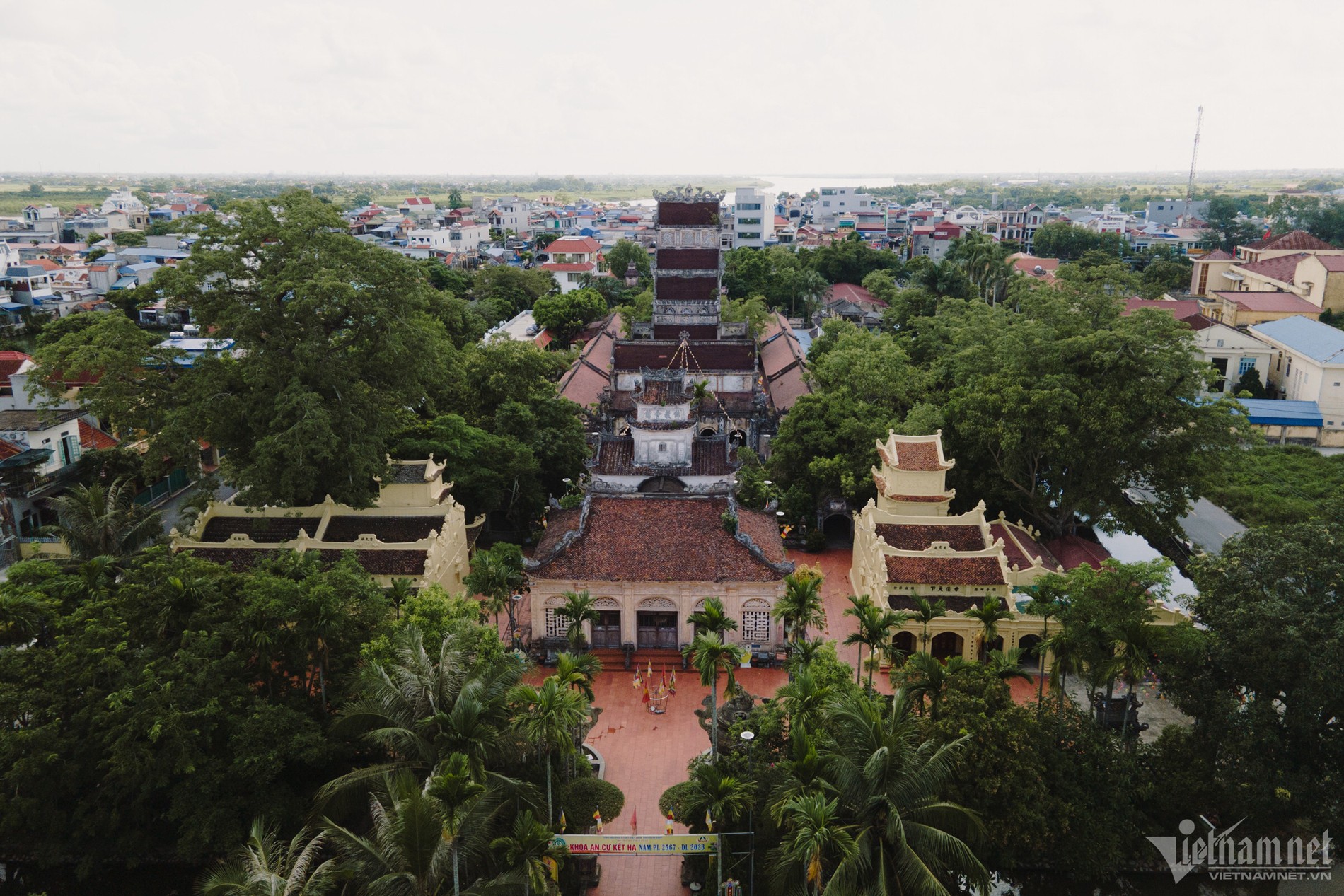 co le pagoda.jpg1.jpg
co le pagoda.jpg1.jpg
10.1. Enhance Your Visit with SIXT.VN
To make the most of your visit to Co Le Pagoda, consider using SIXT.VN to arrange for a knowledgeable tour guide who can provide in-depth information about Nguyen Minh Khong and the pagoda’s history. SIXT.VN can also assist with transportation, accommodation, and other travel needs, ensuring a smooth and memorable experience.
11. Exploring Co Le Pagoda: A Blend of History and Architecture
Co Le Pagoda, also known as Than Quang Tu, offers a captivating blend of historical and architectural marvels, making it a must-visit destination in Vietnam. Let’s delve into the unique aspects of this pagoda:
11.1. A Unique Architectural Fusion
Co Le Pagoda stands out with its unique fusion of Eastern and Western architectural styles.
- Traditional Layout: Following the traditional “Tien Phat, Hau Thanh” layout (Buddha in the front, Saints in the back).
- Gothic Influences: Vaulted ceilings and colorful frescoed walls reminiscent of Catholic cathedrals.
- Vietnamese Motifs: Decorative carvings and reliefs adorning the arched ceilings and walls.
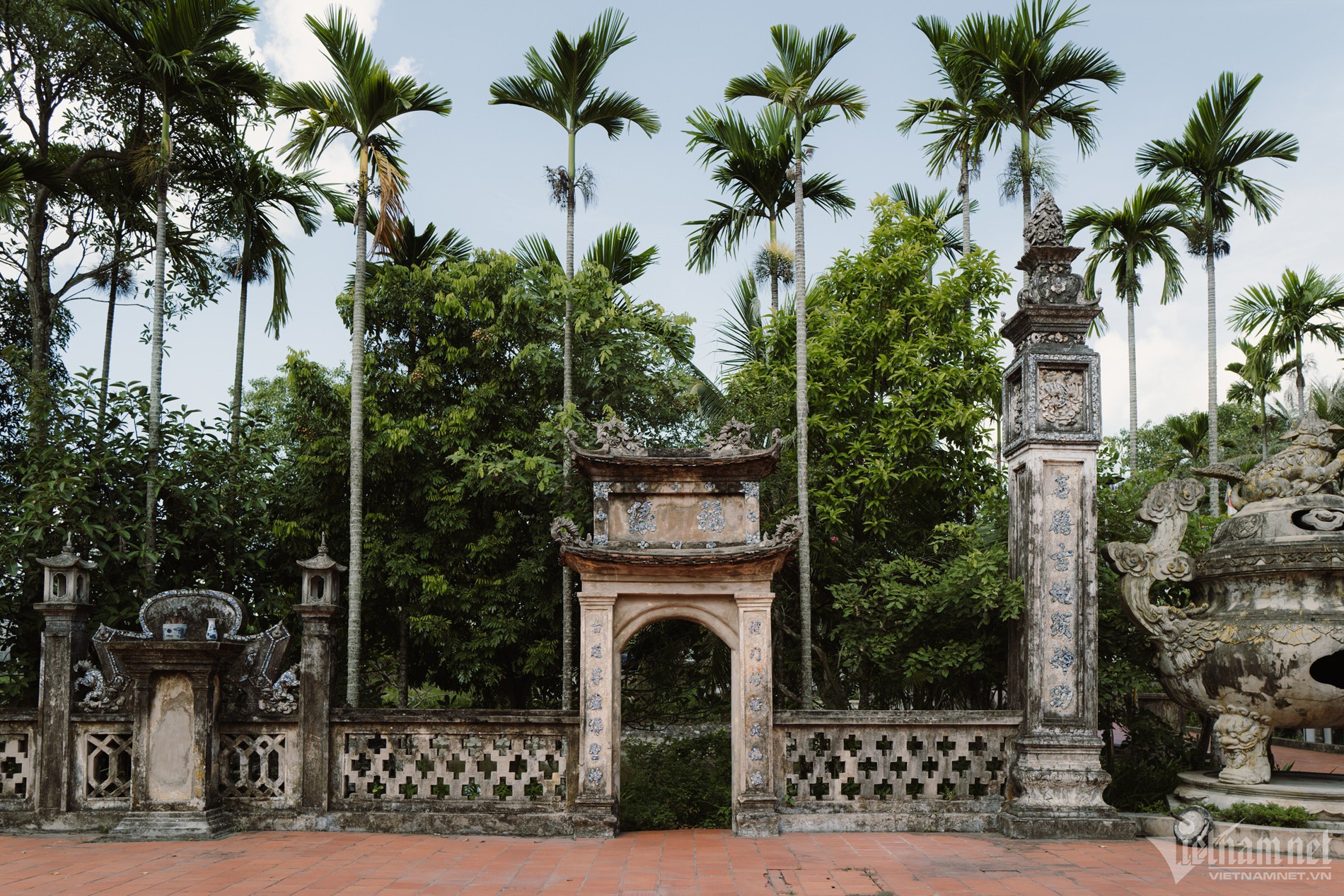 co le pagoda.jpg2.jpg
co le pagoda.jpg2.jpg
11.2. The Nine-Story Lotus Tower
The Nine-story Lotus Tower is one of the most striking features of Co Le Pagoda.
- Height: Stands 32 meters tall.
- Symbolism: Nine stacked lotus petals, symbolizing the nine celestial realms in Buddhist cosmology.
- Spiral Staircase: A spiral staircase with 98 steps leads to the top, offering panoramic views.
- Traditional Materials: Constructed using traditional materials such as lime, bricks, sand, molasses, and salt.
11.3. Vietnam’s Legendary Giant Bronze Bell
Co Le Pagoda is home to one of the largest ancient bronze bells in Vietnam.
- Casting Year: Cast in 1936.
- Donations: Buddhist followers donated gold jewelry, which was melted into the bell during its creation.
- Dimensions: Stands 4.2 meters tall, with a diameter of 2.2 meters and an 8-centimeter-thick bronze shell.
- Historical Significance: Submerged in a lake to protect it from war and retrieved in 1954.
11.4. Annual Festival and Spiritual Traditions
The annual Co Le Pagoda Festival is a significant cultural event.
- Timing: Held from the 13th to the 16th day of the ninth lunar month.
- Activities: Buddhist ceremonies, processions, traditional spiritual performances, cultural and folk games, and dragon boat racing.
- Recognition: Officially recognized as a National Intangible Cultural Heritage in 2023.
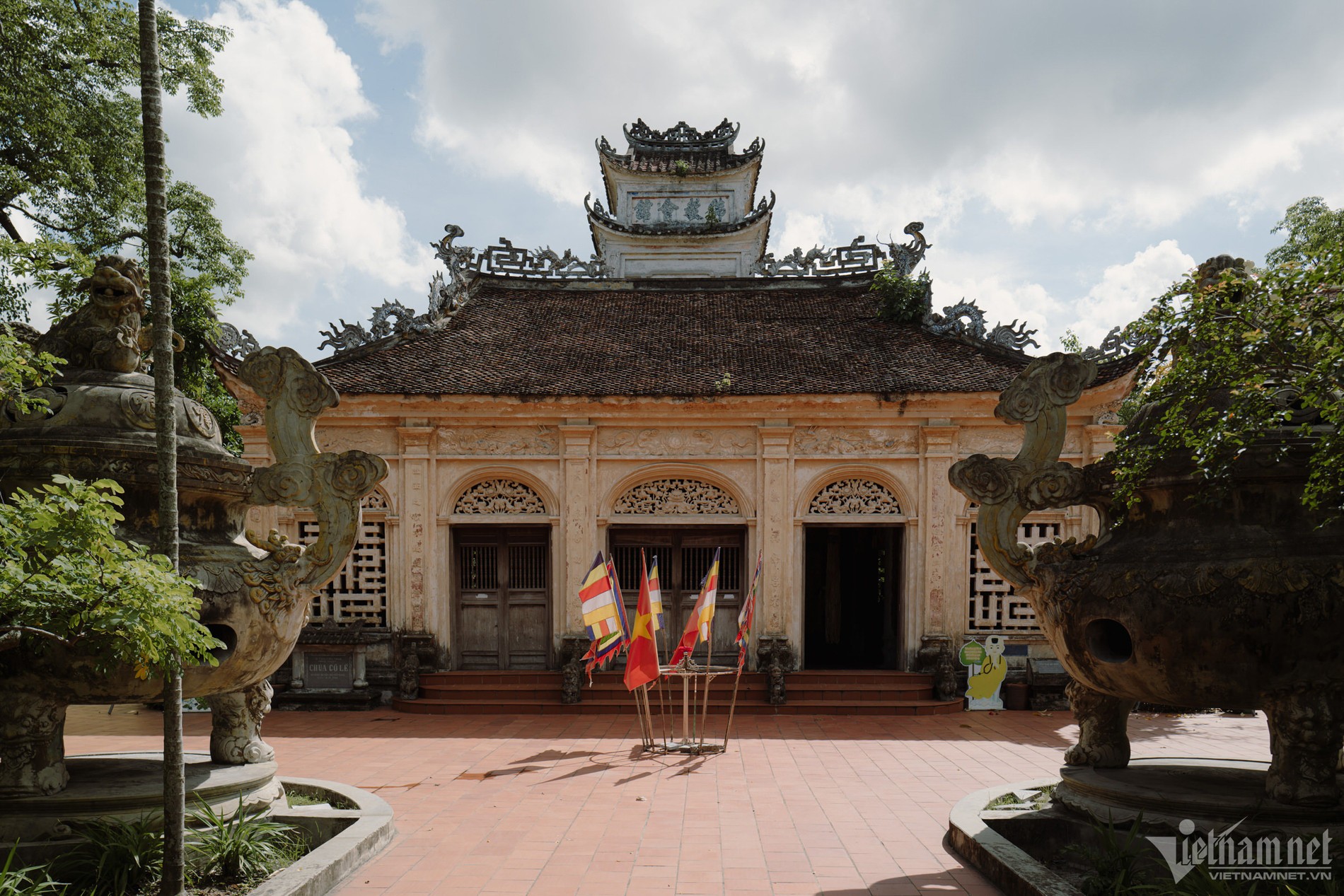 co le pagoda.jpg3.jpg
co le pagoda.jpg3.jpg
11.5. Navigating Your Visit with SIXT.VN
Planning a visit to Co Le Pagoda? SIXT.VN offers comprehensive travel solutions to ensure a seamless and enriching experience:
- Transportation: Arrange for convenient and reliable transportation to and from Co Le Pagoda.
- Accommodation: Book comfortable accommodations in nearby areas, catering to various budgets and preferences.
- Tour Services: Engage knowledgeable tour guides who can provide historical and cultural insights.
- Customized Itineraries: Create personalized travel itineraries to explore the best of Nam Dinh and its surrounding areas.
12. Practical Information for Visiting Co Le Pagoda
Planning your visit to Co Le Pagoda requires some practical considerations. Here’s what you need to know:
12.1. Location and Accessibility
- Address: Co Le Pagoda is located in Truc Thanh Commune, Truc Ninh District, Nam Dinh Province, Vietnam.
- Transportation: The most convenient way to reach Co Le Pagoda is by car or bus from Hanoi, which is approximately 90 kilometers away. SIXT.VN can arrange private transportation for a comfortable journey.
12.2. Best Time to Visit
- Weather: The best time to visit is during the dry season, from October to April, when the weather is pleasant and suitable for outdoor activities.
- Festival: If you want to experience the vibrant Co Le Pagoda Festival, plan your visit around the ninth lunar month (usually in October or November).
12.3. Entrance Fees and Opening Hours
- Entrance Fee: There is no entrance fee to visit Co Le Pagoda, making it accessible to all visitors.
- Opening Hours: The pagoda is generally open from early morning to late afternoon, but it’s best to check the specific hours before your visit.
12.4. Dress Code and Etiquette
- Dress Modestly: When visiting Co Le Pagoda, it is important to dress modestly, covering your shoulders and knees.
- Remove Shoes: Remove your shoes before entering the main halls of the pagoda.
- Respectful Behavior: Maintain a respectful demeanor and avoid loud conversations or disruptive behavior.
12.5. Nearby Attractions
- Nam Dinh City: Explore the historical and cultural attractions of Nam Dinh City, including other ancient temples and pagodas.
- Hai Hau Beach: Relax on the beautiful Hai Hau Beach, known for its scenic views and fresh seafood.
- Xuan Thuy National Park: Discover the diverse ecosystem of Xuan Thuy National Park, a haven for migratory birds.
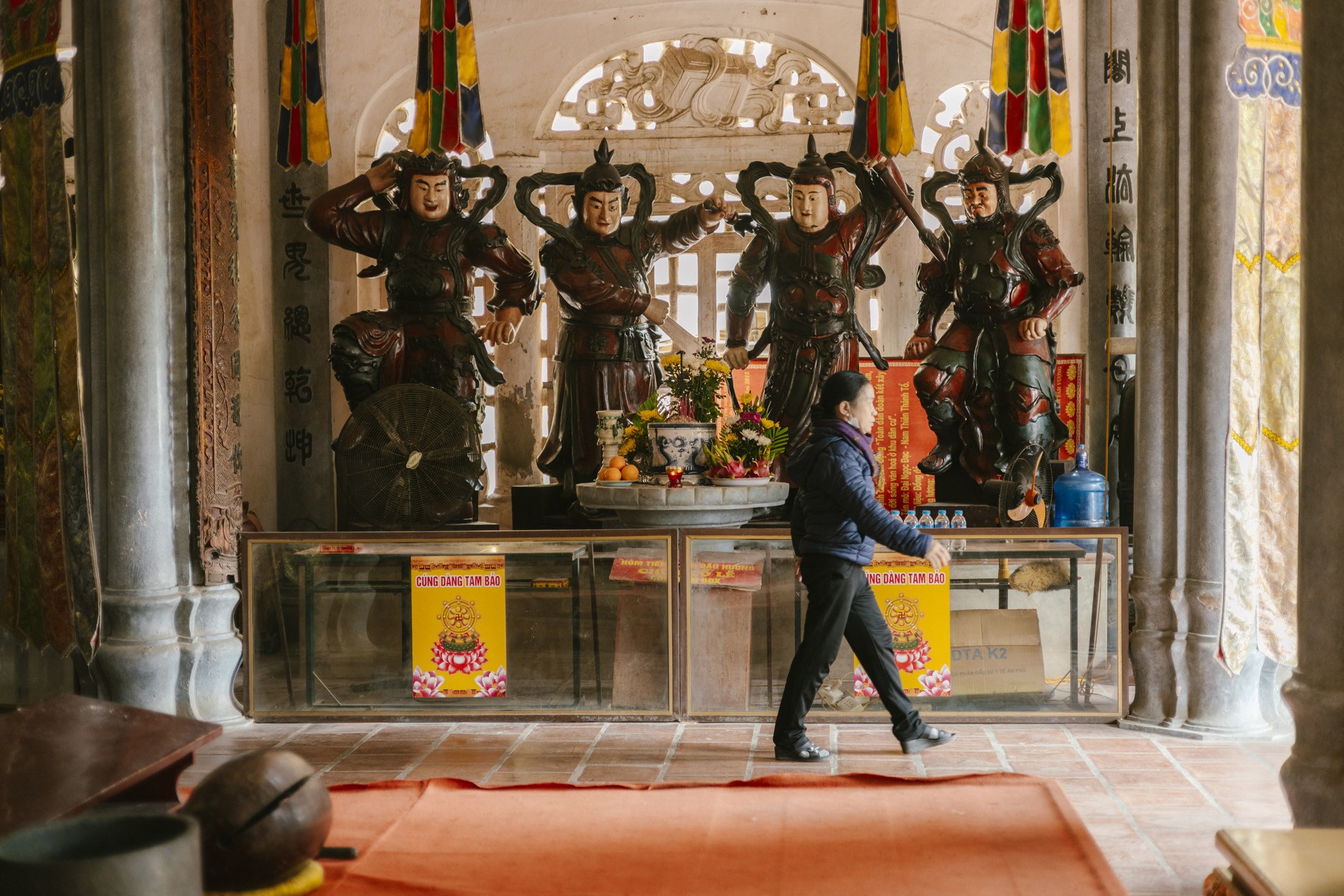 co le pagoda.jpg4.jpg
co le pagoda.jpg4.jpg
12.6. Planning Your Trip with SIXT.VN
SIXT.VN offers a range of services to help you plan your visit to Co Le Pagoda:
- Transportation: Arrange for airport transfers, private car rentals, and bus tickets.
- Accommodation: Book hotels and guesthouses near Co Le Pagoda.
- Tour Packages: Choose from customized tour packages that include visits to Co Le Pagoda and other nearby attractions.
- Travel Insurance: Purchase travel insurance for peace of mind during your trip.
13. The Architectural Marvels of Co Le Pagoda
Co Le Pagoda is renowned for its unique architectural style, which blends Eastern and Western influences. Let’s explore the key architectural elements that make this pagoda a masterpiece:
13.1. Main Gate and Courtyard
- Grand Entrance: The main gate welcomes visitors with its impressive structure and intricate carvings.
- Spacious Courtyard: The courtyard provides a serene space for reflection and contemplation before entering the main halls.
13.2. The Three-Entrance Gate (Tam Quan)
- Traditional Design: The Tam Quan gate features three entrances, symbolizing the three realms of existence.
- Decorative Elements: Intricate carvings and reliefs adorn the gate, showcasing traditional Vietnamese artistry.
13.3. Buddhist Assembly Hall
- Central Structure: The Buddhist assembly hall serves as the main gathering place for religious ceremonies and practices.
- Ornate Details: The hall features ornate details, including gilded statues, intricate carvings, and vibrant murals.
13.4. Temple of Tran Hung Dao (Linh Quang Tu)
- Historical Significance: This temple is dedicated to Tran Hung Dao, a renowned Vietnamese general who defeated the Mongol invaders.
- Statues and Relics: The temple houses statues and relics related to Tran Hung Dao, offering insights into Vietnamese history and military prowess.
13.5. Mother Goddess Shrine (Phu Mau)
- Folk Religion: The Mother Goddess shrine reflects the influence of folk religion in Vietnamese spiritual practices.
- Colorful Decor: The shrine is adorned with colorful decorations and offerings, creating a vibrant and mystical atmosphere.
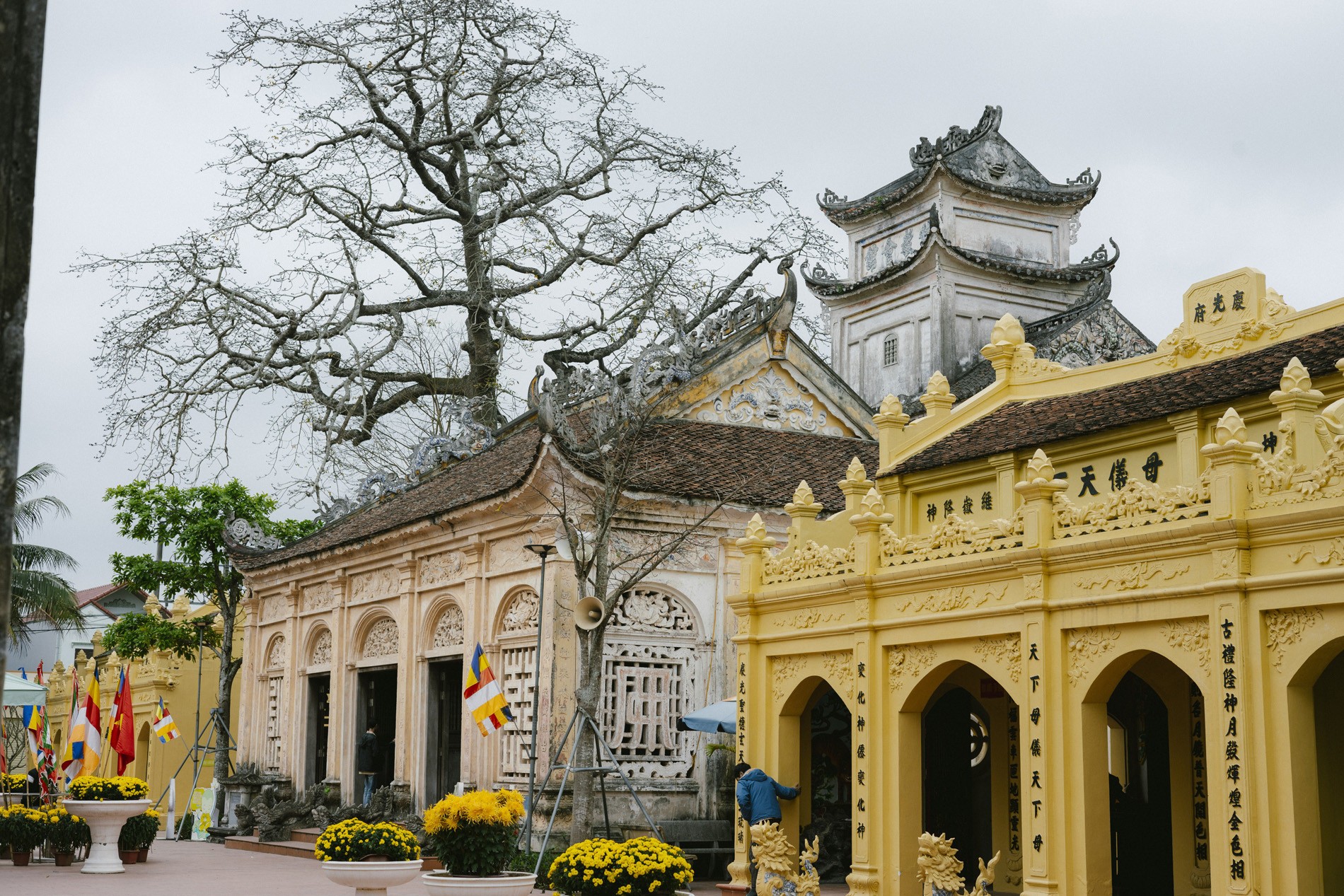 co le pagoda.jpg5.jpg
co le pagoda.jpg5.jpg
13.6. Main Pagoda
- Central Structure: The main pagoda is the heart of the complex, housing important Buddhist relics and statues.
- Architectural Details: The pagoda features intricate architectural details, including curved roofs, decorative eaves, and ornate carvings.
13.7. Bell Tower
- Towering Structure: The bell tower stands tall, housing the giant bronze bell that is one of the pagoda’s most prized possessions.
- Historical Significance: The bell tower symbolizes the pagoda’s spiritual significance and its role in the community.
13.8. Discovering Architectural Wonders with SIXT.VN
To fully appreciate the architectural marvels of Co Le Pagoda, consider using SIXT.VN to arrange for a knowledgeable tour guide who can provide detailed insights into the pagoda’s history and design. SIXT.VN can also assist with transportation, accommodation, and other travel needs, ensuring a seamless and enriching experience.
14. Immerse Yourself in the Spiritual Traditions of Co Le Pagoda
Co Le Pagoda offers a rich tapestry of spiritual traditions that provide visitors with a profound and immersive experience. Let’s explore the key spiritual practices that define this sacred site:
14.1. Buddhist Ceremonies and Rituals
- Daily Chanting: Monks and nuns perform daily chanting and sutra recitations, creating a serene and meditative atmosphere.
- Offerings: Visitors can make offerings of flowers, incense, and fruit to Buddha and other deities, expressing their devotion and seeking blessings.
- Special Ceremonies: The pagoda hosts special ceremonies throughout the year, commemorating important Buddhist holidays and events.
14.2. Meditation and Mindfulness
- Tranquil Spaces: The pagoda offers tranquil spaces for meditation and mindfulness practices, allowing visitors to connect with their inner selves and find peace and serenity.
- Guided Meditation: Monks and nuns may offer guided meditation sessions, providing visitors with instruction and support in their spiritual practice.
14.3. Pilgrimages and Devotion
- Sacred Site: Co Le Pagoda is a popular pilgrimage site for Buddhists and other spiritual seekers, who come to pay their respects and seek blessings.
- Acts of Devotion: Visitors engage in various acts of devotion, such as praying, making offerings, and circumambulating the pagoda, expressing their faith and seeking spiritual merit.
14.4. Ancestor Veneration
- Family Altars: The pagoda features family altars where visitors can honor their ancestors and seek their blessings.
- Offerings to Ancestors: Visitors make offerings of food, incense, and paper money to their ancestors, expressing their gratitude and seeking their guidance.
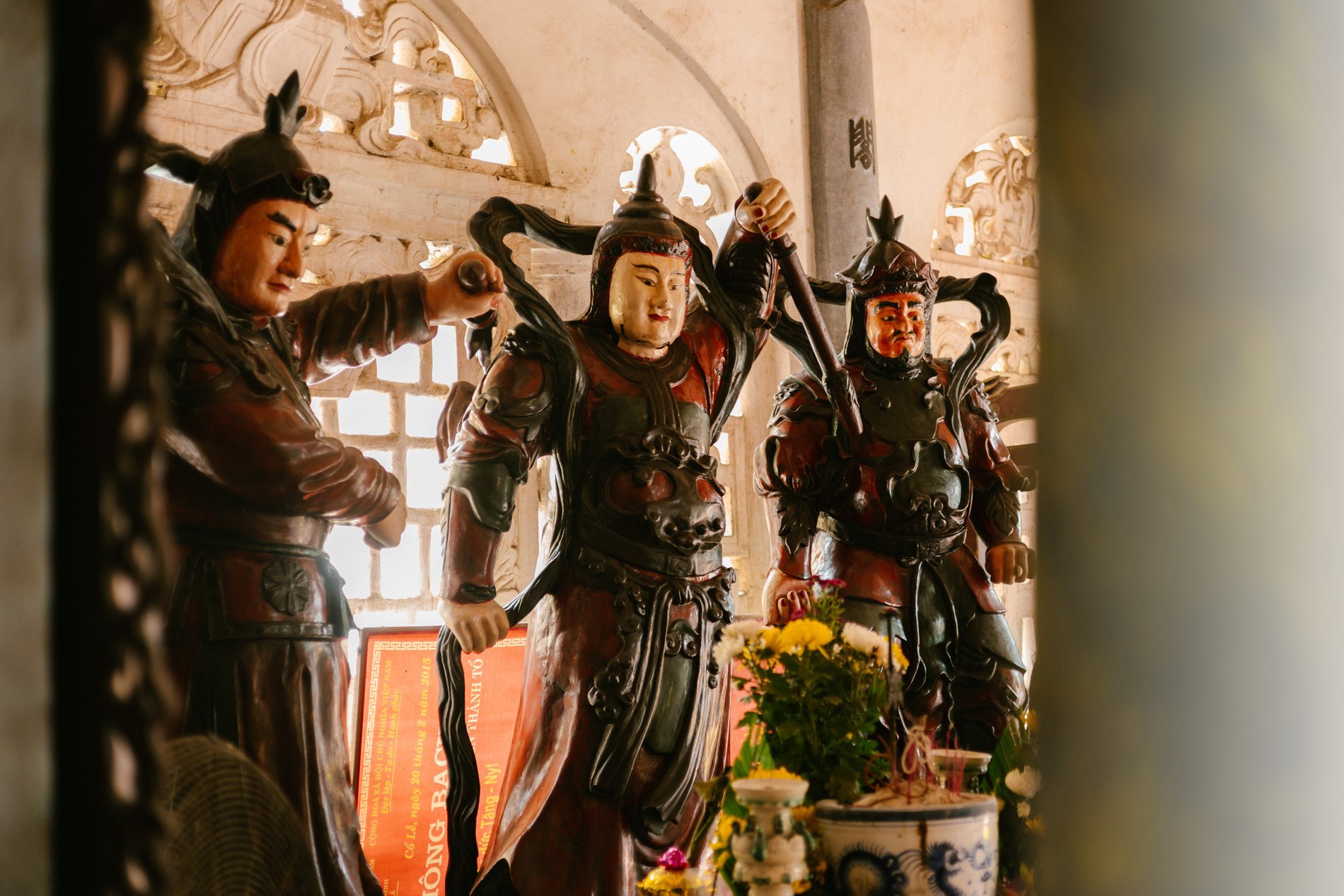 co le pagoda.jpg6.jpg
co le pagoda.jpg6.jpg
14.5. Community Worship
- Communal Prayers: The pagoda serves as a central gathering place for communal prayers and worship, fostering a sense of community and shared spirituality.
- Festivals and Celebrations: The pagoda hosts festivals and celebrations throughout the year, bringing together the local community to celebrate their faith and traditions.
14.6. Embrace Spiritual Traditions with SIXT.VN
To fully immerse yourself in the spiritual traditions of Co Le Pagoda, consider using SIXT.VN to arrange for a knowledgeable guide who can provide insights into the various practices and ceremonies. SIXT.VN can also assist with transportation, accommodation, and other travel needs, ensuring a seamless and enriching experience.
15. Co Le Pagoda as a National Heritage Site
Co Le Pagoda’s recognition as a National Architectural Heritage Site underscores its cultural and historical significance in Vietnam. Let’s explore the importance of this designation:
15.1. Historical and Cultural Value
- Ancient Origins: Co Le Pagoda dates back to the Ly Dynasty, making it one of the oldest and most historically significant temples in Vietnam.
- Cultural Synthesis: The pagoda’s unique blend of Eastern and Western architectural styles reflects the cultural synthesis that has shaped Vietnamese society over centuries.
15.2. Architectural Significance
- Unique Design: The pagoda’s architecture is a testament to the ingenuity and creativity of Vietnamese artisans and builders.
- Preservation of Heritage: The pagoda serves as a valuable example of traditional Vietnamese architecture and artistry, preserving it for future generations.
15.3. Role in the Community
- Spiritual Center: Co Le Pagoda serves as a spiritual center for the local community, providing a place for worship, meditation, and community gatherings.
- Cultural Identity: The pagoda is an integral part of the cultural identity of the region, shaping its traditions, values, and social norms.
15.4. Tourism and Economic Impact
- Attracting Visitors: The pagoda attracts visitors from across Vietnam and around the world, boosting the local economy and creating employment opportunities.
- Sustainable Tourism: The pagoda promotes sustainable tourism practices, ensuring that its cultural and natural resources are preserved for future generations.
 co le pagoda.jpg7.jpg
co le pagoda.jpg7.jpg
15.5. Preservation Efforts
- Government Support: The Vietnamese government provides support for the preservation and maintenance of Co Le Pagoda, ensuring that it remains a valuable cultural asset.
- Community Involvement: The local community actively participates in the preservation efforts, volunteering their time and resources to protect the pagoda.
15.6. Experiencing National Heritage with SIXT.VN
To fully appreciate the significance of Co Le Pagoda as a National Heritage Site, consider using SIXT.VN to arrange for a knowledgeable tour guide who can provide insights into its history, architecture, and cultural importance. SIXT.VN can also assist with transportation, accommodation, and other travel needs, ensuring a seamless and enriching experience.
16. Planning Your Visit: Services Offered by SIXT.VN
SIXT.VN offers a comprehensive range of services to ensure a seamless and enriching travel experience. Let’s explore the key services that can enhance your visit to Co Le Pagoda:
16.1. Airport Transfers
- Convenient Transportation: SIXT.VN provides convenient and reliable airport transfer services, ensuring a smooth transition from the airport to your hotel or Co Le Pagoda.
- Professional Drivers: Professional and experienced drivers will greet you at the airport and transport you safely and comfortably to your destination.
16.2. Private Car Rentals
- Flexible Travel: SIXT.VN offers private car rental services, allowing you to explore Co Le Pagoda and its surrounding areas at your own pace.
- Wide Range of Vehicles: Choose from a wide range of vehicles, including sedans, SUVs, and vans, to suit your travel needs and preferences.
16.3. Accommodation Booking
- Variety of Options: SIXT.VN offers a variety of accommodation options near Co Le Pagoda, ranging from budget-friendly guesthouses to luxurious hotels.
- Convenient Booking: Book your accommodation quickly and easily through SIXT.VN’s online platform, ensuring a comfortable and convenient stay.
16.4. Tour Packages
- Customized Itineraries: SIXT.VN offers customized tour packages that include visits to Co Le Pagoda and other nearby attractions, providing you with a comprehensive and enriching travel experience.
- Knowledgeable Guides: Knowledgeable and experienced tour guides will accompany you on your tours, providing insights into the history, culture, and architecture of the region.
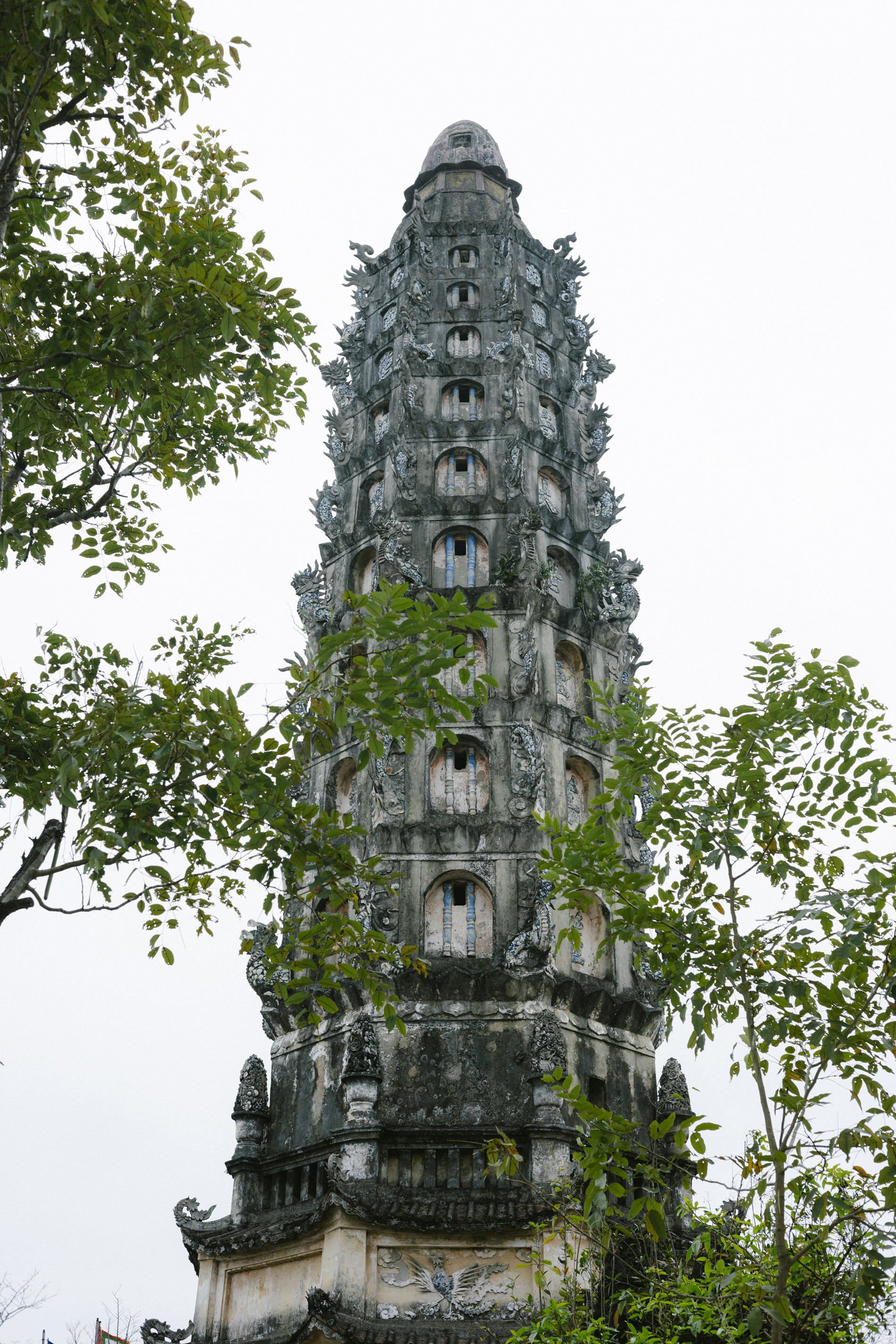 co le pagoda.jpg8.jpg
co le pagoda.jpg8.jpg
16.5. Travel Insurance
- Peace of Mind: SIXT.VN offers travel insurance options to provide you with peace of mind during your trip, protecting you against unforeseen events and emergencies.
- Comprehensive Coverage: Choose from a range of travel insurance plans that offer comprehensive coverage for medical expenses, trip cancellations, and other travel-related issues.
16.6. Additional Services
- Visa Assistance: SIXT.VN can assist you with visa application and processing, ensuring a smooth and hassle-free travel experience.
- Currency Exchange: SIXT.VN can provide currency exchange services, allowing you to convert your currency into Vietnamese Dong quickly and easily.
- Local SIM Cards: SIXT.VN can provide local SIM cards, allowing you to stay connected with your friends and family during your trip.
16.7. Contact Information
For more information about SIXT.VN’s services, please contact us:
- Address: 260 Cau Giay, Hanoi, Vietnam
- Hotline/Whatsapp: +84 986 244 358
- Website: SIXT.VN
17. Frequently Asked Questions (FAQs) About Nguyen Minh Khong and Co Le Pagoda
17.1. Who was Nguyen Minh Khong?
Nguyen Minh Khong was a celebrated monk, physician, and magician during the Ly Dynasty, revered for his healing abilities and spiritual influence.
17.2. What is the significance of Nguyen Minh Khong?
Nguyen Minh Khong is significant for his contributions to Vietnamese Buddhism, his healing abilities, and his role as a cultural icon.
17.3. How is Nguyen Minh Khong associated with Co Le Pagoda?
Co Le Pagoda, originally named “Than Quang Tu,” was dedicated to both Buddha and Saint Nguyen Minh Khong, reflecting his spiritual connection to the site.
17.4. What role did Nguyen Minh Khong play in the construction of Co Le Pagoda?
While direct historical records are limited, local legends suggest he selected the site and contributed to the initial design.
17.5. What are some legends connecting Nguyen Minh Khong to Co Le Pagoda?
Legends include healing King Ly Than Tong, taming a dragon, and magically building the pagoda overnight.
17.6. How does the annual Co Le Pagoda Festival commemorate Nguyen Minh Khong?
The festival features Buddhist ceremonies, processions, traditional performances, and cultural activities honoring his life and legacy.
17.7. What architectural elements of Co Le Pagoda reflect the influence of Nguyen Minh Khong?
The traditional layout, spiritual symbolism, and the dedicated altar to Nguyen Minh Khong all reflect his influence.
17.8. How did Nguyen Minh Khong’s beliefs influence religious practices at Co Le Pagoda?
His emphasis on syncretic Buddhism, healing practices, devotion to saints, and meditation has shaped the pagoda’s spiritual identity.
17.9. What impact did Nguyen Minh Khong’s legacy have on the local community?
His legacy has shaped the community’s cultural identity, fostered social cohesion, and promoted economic development.
17.10. What can visitors learn about Nguyen Minh Khong when visiting Co Le Pagoda today?
Visitors can learn about his life, legacy, spiritual contributions, and cultural significance through historical information, legends, religious practices, and cultural displays.



